Usually, chameleons are the color-changers of the animal kingdom, but spotting a praying mantis turning from brown to green makes you wonder whether this peculiar-looking insect has the color transformation ability.
So, do praying mantis change color? As a rule, no, not like a chameleon. However, during molting, they can appear translucent or even white for a short time with some species changing colors permanently during molting. Praying mantis are masters of camouflage using their colors and body shape to blend in with their surroundings.
There is an exception, the Mantis Religiosa, it’s not in the same league as a chameleon when it comes to changing colors but recent research has found it can change colors.
Below we will take a look at the color-changing abilities of praying mantis, as well as how and when these changes might take place. Also, we will take more about the Mantis Religiosa and how it changes color.
Why Does A Praying Mantis Change Color?
Camouflage has always been part of nature as one of the most effective strategies to stay safe from predators. Insects resembling sticks, leaves, and rocks have a much better chance of survival, as they are well-hidden from predators. The praying mantis also needs to blend in with the environment to avoid becoming a meal.
Environments can change throughout the year as seasons change, so the ability to adapt to this is likely why the praying mantis can change color.
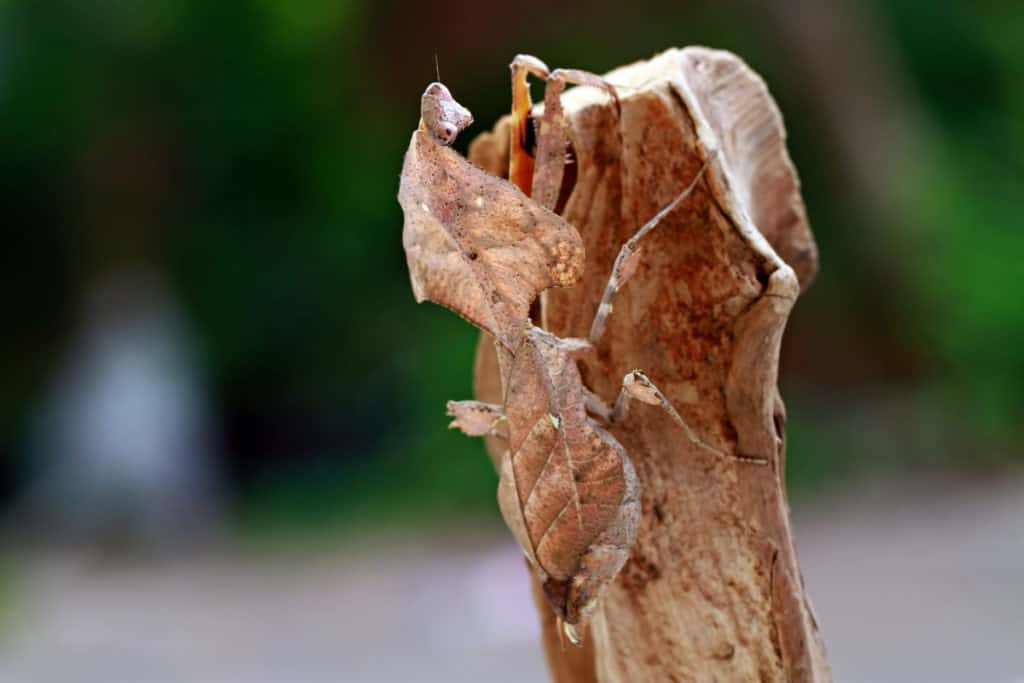
Plants that had lush green leaves and stems in summer can suddenly transform to a drab, brown appearance in winter.
Temperatures can also affect the appearance of plants. Colorful flowers attract pollinators such as bees, flies, and other insects.
Males and females can also be different in color. There is a Latin American species, Hondurantemna Chespiritoi, where the male is brown like the nymph stages, and the female is green.
The males have a stubby, stick-like body. Female wings become vein-like resembling a leaf structure, so seeing them on plants is more difficult.
In the science world adaptations to environments are called convergent evolution.
Color Changing As Part Of Their Camouflage Ability
Have you ever wondered what species of insect are the masters of disguise? It is definitely the mantids.
There are several species that blend in with their surroundings by assuming the same color as their setting.
Although these adaptations are not consciously changing in the same way that a chameleon changes color, the following species are worth taking note of due to their unique color and shape adaptations to their surroundings.
The flower mantis group resembles flowers. These predators climb into flowers and sit patiently without moving until an insect arrives.
The orchid mantis, for example, is white with bits of light and dark pink accents, but some of them can be completely white or pink.
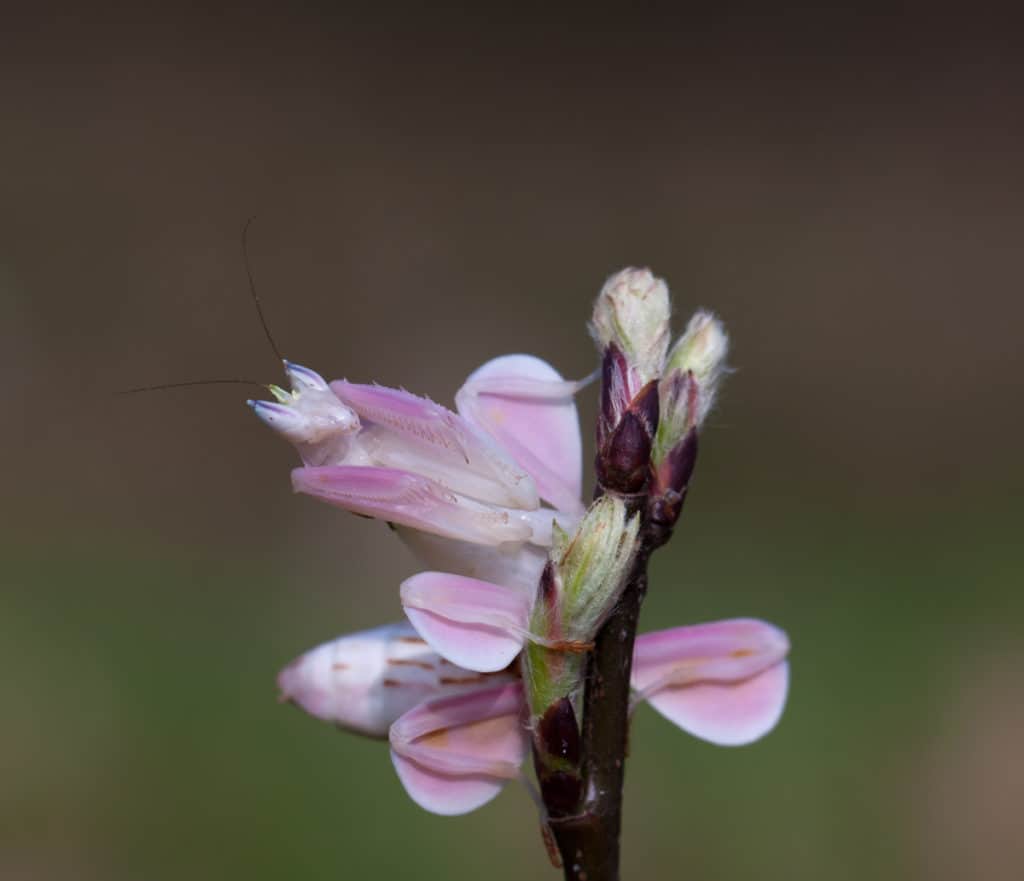
One researcher has found that orchid mantis attracts more bees than other flowers in the environment.
To humans, it may be easy to see the difference, but to bugs in the wild, it may not be as easy as they respond to color and therefore can easily identify a colorful mantis as a flower.
The dead leaf mantis occurs in Malaysia and has the appearance of a dead leaf. They are brown, but carry a shield on their back, resembling a giant dead leaf. This species is easily scared by large prey and will play dead if frightened.
The devil’s flower mantis from East Africa is a giant species that mimic flowers.
It grows approximately 10 to 13 centimeters (4 to 5 inches) in length. The adults are green on top but have some green, white, red, purplish-blue and, black underneath.
This is not visible unless the mantis feels threatened. At the time it will rear up and all the colors will help it to resemble a flower.
Another interesting species in the mantis world is the giant African stick mantis. This mantis has a long slender appearance, mimicking a dried stick. They will hold out their arms in front of them to resemble twigs when threatened.
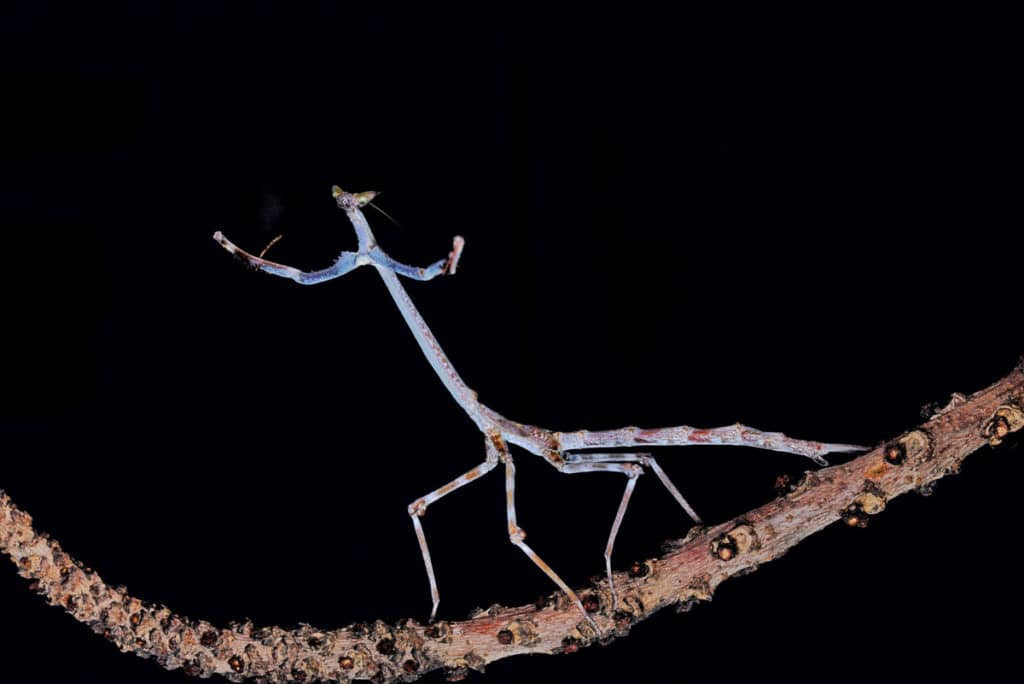
This giant species can measure 10-12cm (4-4.7 inches).
Swaying Is Part Of The Praying Mintis Camouflage Strategy
If you have ever observed a praying mantis in nature while on the move you would have seen it sway from side to side.
Researchers believe that this may be part of their tactics to mimic a plant moving in the wind.
Others say it may even be to help them with sight as they can’t see very well.
Perhaps it is a hypnotizing move when a predator chooses to eat a praying mantis, but either way, combined with their colors, it is an effective method when keeping them well hidden in vegetation.
Camouflage To Aids Praying Mantis In Hunting
Camouflage can help the praying mantis hunt its prey. If an insect were to feel safe enough to land on a plant without knowing the danger, it would be much easier for the praying mantis to grab this meal.
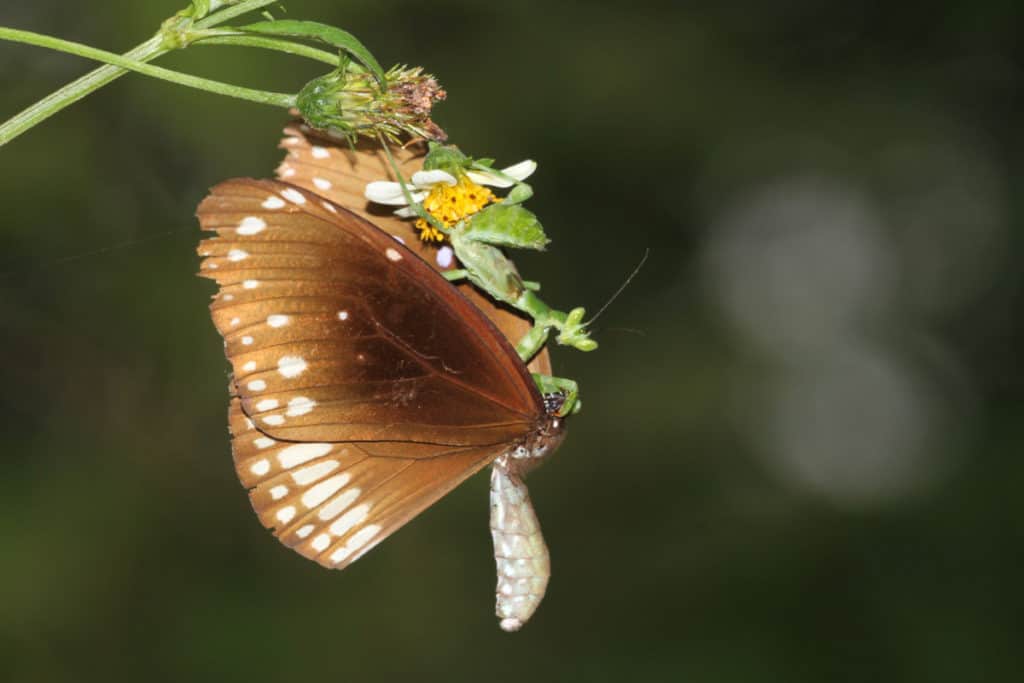
The praying mantis makes use of ambush hunting, as it falsely claims to be a part of the plant, while it is actually not.
Once the prey lands close enough to the praying mantis, the mantis will reach out and grab it with its forearms, bite the insect, and kill it.
For instance, the Orchid Mantis mantis takes on a flower-like appearance, pollinators like honey bees, moths and butterflies will land on it in an attempt to collect pollen and nectar from what they think is a flower. Check out this video below to see incredibly effective Orchid mantis are.
However, research shows that some of these flower mantids are better at luring prey than actual flowers.
Even their legs look like flower petals, so insects will naturally be attracted.
If you are interested we have an entire article about the diets and hunting strategies of pray mantis. The article is called, What Does A Praying Mantis Eat?
The Exception To The Rule – Chameleon Of The Mantis World
Surprisingly, there are always exceptions to the general rules when it comes to Mother Nature and her abilities.
The European mantis (Mantis Religiosa) occurs in both green and brown vegetation.
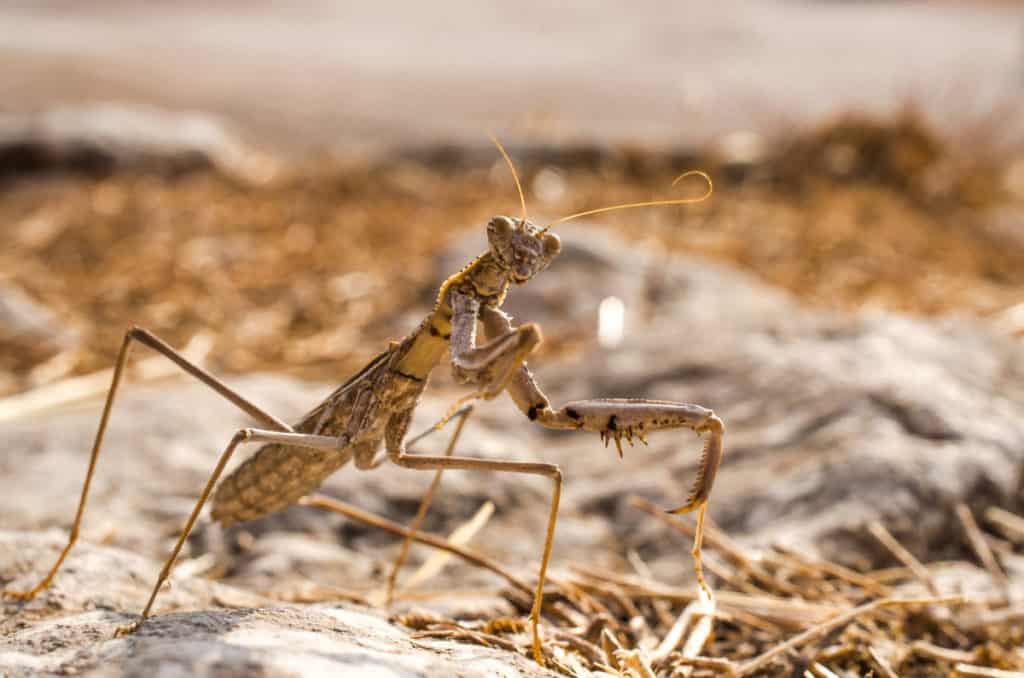
While most species can change colors between molts while still growing, this one has adapted so much that it can change colors depending on where it is at the time.
Scientists found that adults can change color, which contradicted previous research which claimed that the color change would only occur during molting.
The researchers captured adults and juveniles in the field for the study. They found that there was a correlation between the color of the adults, the climatic conditions, and the substrate color.
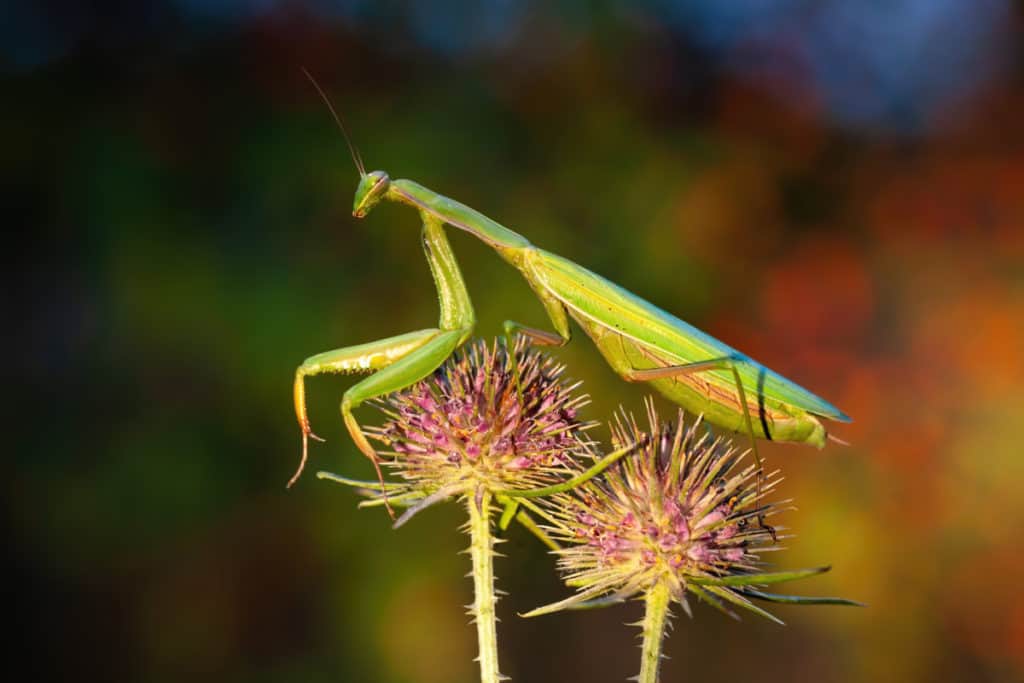
In hot summer temperatures, brown ground vegetation and brown mantids were more common. In cooler weather, green vegetation and green mantids were more common. Those captured and studied also changed color slowly.
If you are interested we have another article about the colors of another fascinating insect, the ladybug. If you want to check it out the article is called, Ladybug Colors: Your complete Guide
Color Changing Between Molting Stages Of Praying Mantis
Mantids have a gradual metamorphosis, so will change several times before finally reaching adulthood.
The African mantis as an example requires about 30 molts before reaching adulthood. After hatching, nymphs will stay in the cocoons for a while and then disperse.
It is during these molting stages that praying mantis species are most likely to change color.
Youngsters can take on a brown hue after molting, but this happens gradually over a few days, and not immediately.
The devil’s flower mantis, for example, is colorful only at the adult stage – green and white on top, but underneath the predatory arms, they feature white, red, purple, and even black.
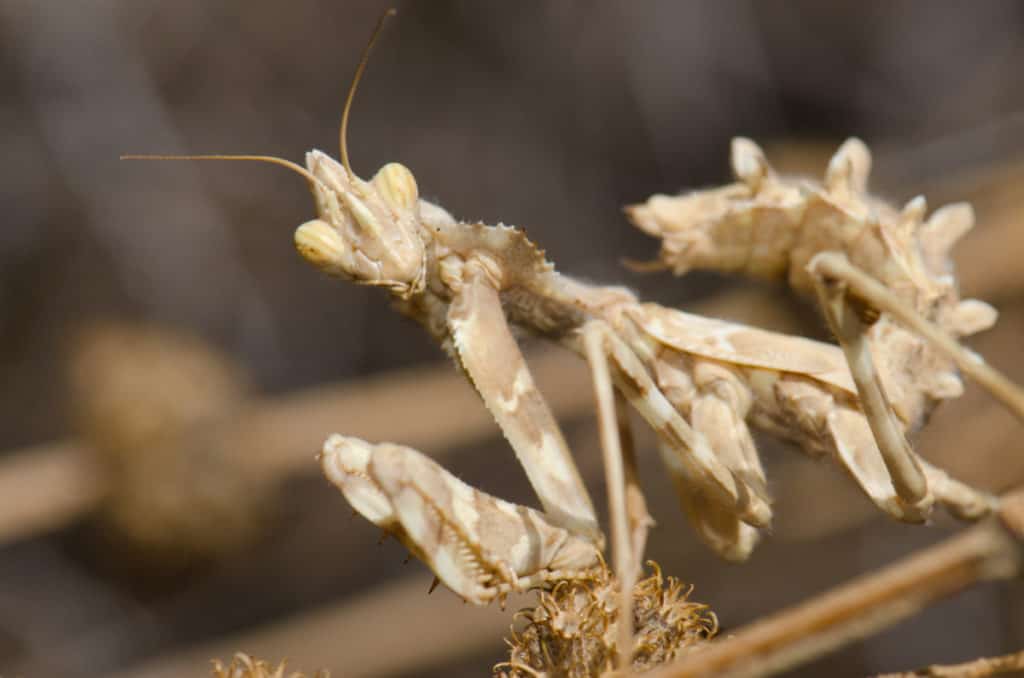
In this case, the nymphs look nothing like the adults.
They are plain brown, resembling dead leaves.
When they are newly born, they are black, possibly to resemble an ant.
In fact, most small mantis species take on this strategy.
Wondering what such small praying mantis would eat? Wonder no more, check out this article we have written, What Do Baby Praying Mantis Eat?
The Wrap Up
Unlike chameleons and octopi, praying mantis does not generally change color by command.
Although, as it is with nature, there are always exceptions and some species do possess the ability to slowly change colors as adults, most mantis species will undergo color changes only while they move through different molting stages and head towards adulthood.
From their final molt, in most cases, the praying mantis will remain the same color for the remainder of its life.
Praying mantis are super cool insects. If you are interested in knowing more about them check out some of these other articles:
Do Praying Mantis Die After Laying Eggs?
The Giant Asian Mantis: Your Complete Guide
Praying Mantis Vs Stick Bug. Are They The Same Thing?
The Budwing Mantis: Your Complete Guide
The Spiny Flower Mantis: Your Complete Guide
Sources
https://www.sanbi.org/animal-of-the-week/african-mantis/
http://www.bulletinofinsectology.org/pdfarticles/vol63-2010-085-089battiston.pdf
